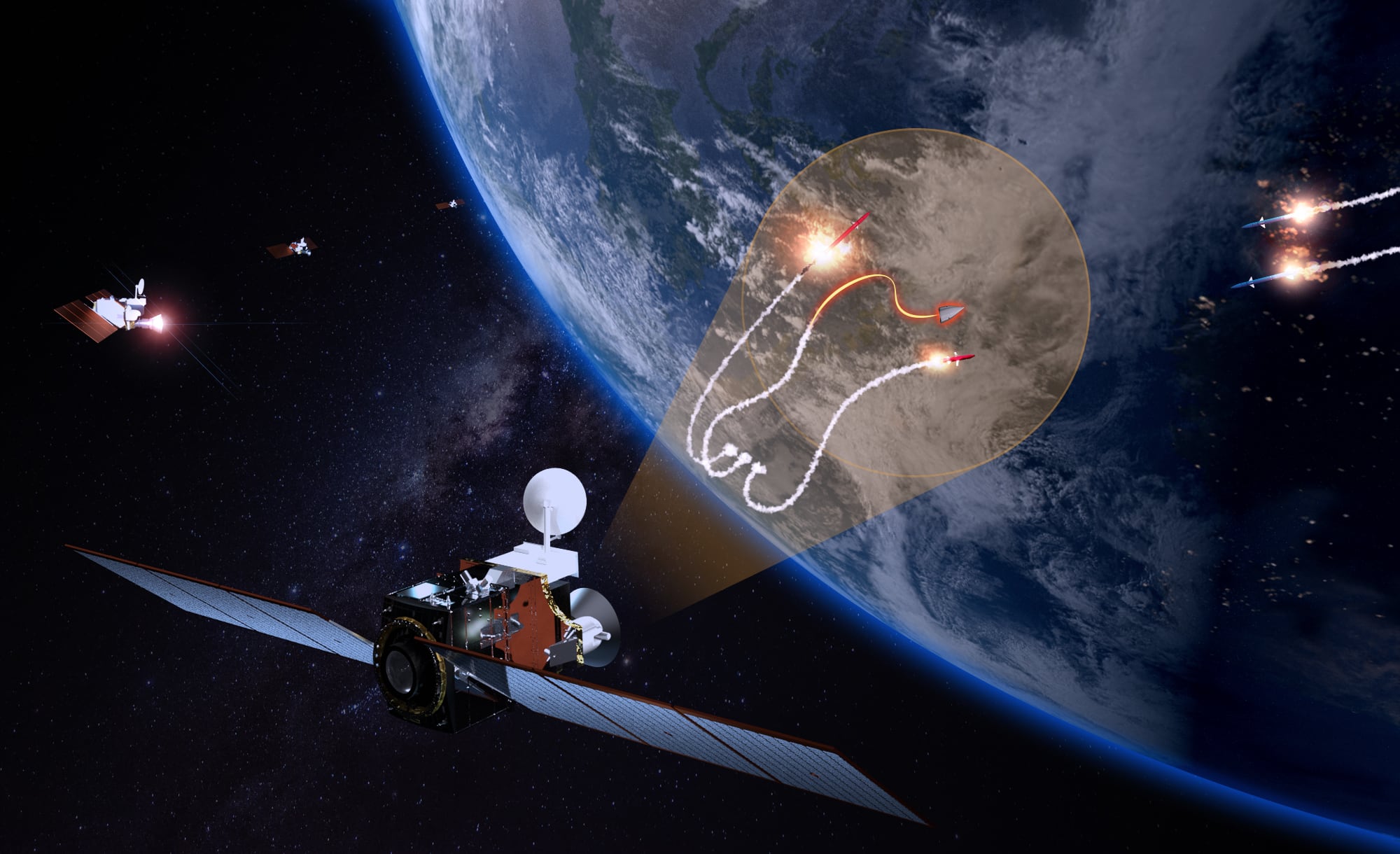WASHINGTON — The prototype satellites that will help the U.S. Missile Defense Agency track hypersonic threats have passed a critical design review, meaning the contractors can move forward with manufacturing.
The Missile Defense Agency selected L3Harris Technologies and Northrop Grumman in January to design, build and demonstrate prototype satellites for its Hypersonic and Ballistic Tracking Space Sensor. L3Harris was awarded $122 million, while Northrop Grumman was awarded $155 million.
Unlike the Space Force’s current missile warning constellation, which is made up of a handful of satellites more than 20,000 miles above the Earth’s surface, HBTSS will operate in low Earth orbit as part of a proliferated constellation of hundreds of satellites.
Satellites being built by the Space Development Agency will initially detect hypersonic and ballistic threats, passing along custody of the object as it passes in and out of view of individual satellites over an orbital mesh network of satellites. Custody will eventually be passed to the more sensitive HBTSS sensors of the Missile Defense Agency, which can create targeting data for an intercept.
“The combination of high speed, maneuverability and relatively low altitude of some of the emerging advanced missile threats makes them challenging targets for our current missile defense systems,” the agency explained when it issued the contracts. “HBTSS is needed, since we cannot populate the Earth and the oceans with terrestrial radars to meet this need. The ‘birth-to-death’ tracking that HBTSS can provide when integrated with terrestrial sensors will make it possible to maintain custody of missile threats from launch through intercept regardless of location.”
Northrop Grumman announced it had completed its critical design review in November.
“When it comes to national safety, there’s no room for error,” said Sarah Willoughby, the company’s vice president for OPIR and geospatial systems. “This critical design review puts Northrop Grumman on track to deliver a vital component of our missile defense architecture to keep the U.S. and its allies safe against hypersonic threats.”
L3Harris announced its completion Dec. 20, while noting that it had already begun construction.
“L3Harris is moving quickly, in collaboration with our customer, to provide prototype HBTSS satellites that demonstrate the sensitivity and fire control quality of service necessary to support the hypersonic kill chain,” said Ed Zoiss, the firm’s president of space and airborne systems.
Nathan Strout covers space, unmanned and intelligence systems for C4ISRNET.








